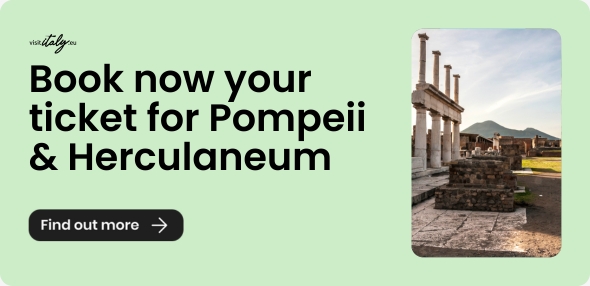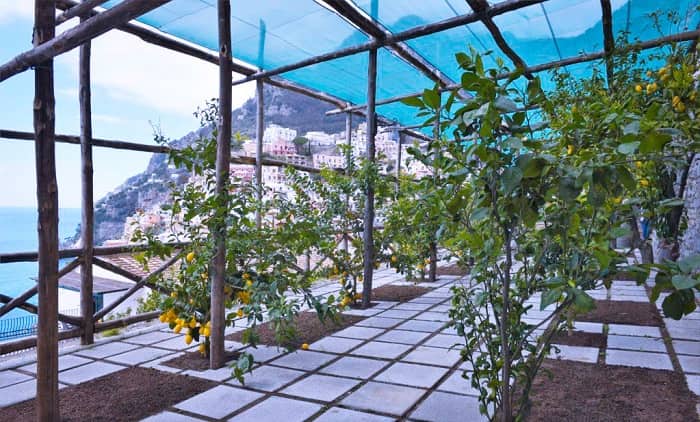The Amalfi Coast is a truly enchanting place.
Thanks to its geographical position, suspended between land and sea, kissed by the warm sun for most of the year, it enjoys an optimal microclimate, which promotes a vital well-being envied by many.
To enjoy these climatic benefits is above all the nature, which gives fruits and products of extraordinary quality and incredible variety. And we know very well how typical products can tell the story of a territory, allowing us to discover aspects and peculiarities that were born in the pages of the past, we still leaf through and read today.
And so the gastronomy of the Amalfi Coast is identifiable above all with the lemons that have the color of the sun, the colatura di alici for a true concentration of sea and the cheeses of the Lattari Mountains.
Let's discover these extraordinary delights.

The lemons of the Amalfi Coast

It is a very common belief that lemons arrived in Europe from China. As a matter of fact it seems that ancient Romans already knew this aromatic fruit pretty well. The proof is the presence of representations of lemons in the mosaics of Carthage and Pompeii. The spreading of this fruit is due, then, to the Arab domination of the XI century, which allowed the introduction of this fruit first in Spain, then in Sicily and then in the lands of the Coast. It is dated back to the times of the Maritime Republic of Amalfi, instead, the rather considerable beginning of the cultivation of lemons, which soon spread in all the neighboring areas. The reason was simple: the significant presence of Vitamin C contained in lemons was capable of warding off scurvy, much feared at the time, and therefore sailors, forced to stay away from their homes for long periods of time, kept large stocks of lemons on board to fight the disease.
After "a few years" the lemon finds its ideal place on the Amalfi Coast. The particular structure between mountains and hills has allowed the creation of large steps, the famous terraces of the Coast, which slowly descend to dive into the crystal clear sea. This system, between the natural and the human intervention, which softens the profile of the mountain but perfectly preserves its hydrogeological balance, defines an entire territory, becoming a real characterizing element.

These steps are held up by dry stone walls and allow to make cultivable a territory that naturally appeared complex and difficult to reach and travel.
On these narrow spaces a system of pergolas made of chestnut poles, allow the plants to rise finding a correct and safe support.
And it is here that the sfusato of Amalfi is born, a lemon with an elongated shape, hence the name sfusato, with its unmistakable yellow color of the sun, intense aroma and sweet citrus flavor. Really remarkable, in this variety of lemon, the presence of Vitamin C, which would be even the double of the one contained in an orange, and of ascorbic acid.
The sfusato of Amalfi in 2001 has obtained the important recognition of the Protected Geographical Indication, IGP.
An all-round use for this extraordinary product, from savory to sweet preparations, up to coffee and digestives. We can start from breakfast with a few drops of lemon in a glass of lukewarm water to drink on an empty stomach, for a healthy start to the day. We can enrich first and second courses with some grated lemon zest to amplify the flavor of a dish: try it on spaghetti with fresh tomatoes, a triumph for the palate! Have you ever tried mozzarella wrapped in lemon leaves and heated on the grill? A real delicacy! The sweet preparations are endless: from the classic addition of small zests to the basic preparations, such as shortcrust pastry and sponge cake, up to the desserts where the lemon flavor is the characterizing element, such as babas and delicacies, granitas and refreshing ice creams. In coffee? Also! It seems that a small piece of lemon peel in a bitter coffee relieves annoying headaches. But the main product of these areas which requires the use of sfusato is limoncello: a digestive liqueur made by macerating lemon peels, to which sugar, water and alcohol are added. Considered one of the most famous products of the Coast, it is a must at the end of every meal!

The colatura of anchovies of Cetara

Those who live on the Coast are said to have "one foot in the vineyard and one on the boat". It is easy to imagine the motivation. Overlooking an extraordinary stretch of sea, it is practically natural to enjoy the fruits that the salt water offers.
The economy of the Coast sees in fishing a real and proper pillar, and consequently the gastronomy of the territory is also enriched. The local culinary tradition is mainly made of preparations based on the products of the local fish. Undisputed queens are anchovies. Not only for their use in purity, but because it is from their salting that the "gold of Cetara" is obtained: the colatura di alici (anchovy sauce).
A truly extraordinary product, capable of changing the flavor of any dish, making it rich and full.
It seems that colatura has an ancestor in "garum romano", a sauce obtained from fish interiors. Here on the Coast it is prepared with a rather long procedure which starts on March 25th, the day of the feast of Annunziata, and ends in the last days of July.

During this long period of time, the anchovies are deboned and their heads removed in order to have a first salting. Then they are placed in wooden barrels, called "terzigno", according to a precise order: a layer of anchovies is placed on top of a large quantity of coarse salt. These alternate layers are repeated until the container is full. A weight is placed on the container in order to press the anchovies. From this process a liquid is obtained which goes down through the layers. It is collected and exposed to the sun for several months and then put back into the cask. The process of casting so is repeated and at the end you get a concentrated amber-colored sea with an intense aroma that tastes good. The colatura is sold in small containers, just because being a concentrate, for its use, it takes only a few drops.
Used to give a sprint to even the simplest dishes, its flavor and its scent will catapult you straight to the seashore of the Amalfi Coast, wherever you are!
The ndunderi of Minori

The green Lattari Mountains, poetically overlooking the Tyrrhenian Sea, are an ideal place for grazing. Lucky animals because their meadows enjoy breathtaking views, fresh breezes and a sparkling scent of salt water. Their way of giving thanks is to produce an extraordinary milk with which they produce very tasty dairy products. Among these there is definitely the provolone del Monaco, a semi-hard cheese with an intense aroma and taste. It owes its name to the wide cloaks that ancient cheese makers wore in winter when they brought their products to Naples, and that made them look like monks.
Another incredible product is ricotta: a very fresh cheese which recalls the taste of the herbs of Monti Lattari. It can be eaten plain or with jam or honey, combined with cold cuts and warm bread, or in sweet preparations such as the now famous ricotta and pear, queen of the Coast's pastries.
But in Minori ricotta rhymes with ndunderi. A very particular name and difficult to pronounce to indicate a very precise variety of gnocchi. In reality it is one of the most ancient pastas in the world, as established by Unesco. It seems in fact that these big gnocchi were already prepared at the time of Romans who mixed together spelt flour and rennet. This was later replaced by fresh ricotta cheese, however combined with white flour.
Usually, being already very tasty by themselves, they are seasoned with a simple fresh tomato sauce. If you then add a few drops of colatura di alici (anchovies sauce) and a grated zest of sfusato, the Amalfi Coast is served!
Valentì, the kingdom of the products of the Amalfi Coast

The ideal thing would be to stock up on these incredible products, put them in your suitcase and then enjoy them at home, to have that wonderful feeling of still keeping your feet in the sea of the Amalfi Coast.
There is a little place in Positano that is the kingdom of typical products of the Coast: Valentì. Not only scents and colors, flavors and delights, but also the overwhelming sympathy of the founders, Valentino and Gesualda, who will welcome you in their colorful store that smells of sun and sea. A magical place where you can taste and buy the most typical products of the territory, prepared in the laboratory overlooking the sea, with the oldest and most authentic recipes.

One of Valentì's most famous products is limoncello, rigorously prepared according to mamma Emilia's recipe and with lemons warmed by the sun from the pergola that seems to dive into the enchanting bay of Positano. To this are added the tasty liqueurs of mandarinetto, fennel and blueberries. These are all preparations that Valentino has learned to know since he was a child, when Emilia used to prepare liqueurs in the kitchen at home. It is from the love for homemade products that Valentì's tradition was born.
Among his products with a special taste there is also lemon marmalade and jams, always new, always different because they are prepared exclusively with fresh seasonal fruit.
Curious to know how to prepare limoncello with the traditional recipe, to enter in its secrets? At Valentì's you can satisfy your curiosity, thanks to the Limoncello&Marmelade Experience. These special tours of about 90 minutes will allow you to enter the heart of Valentino's laboratory and watch the preparation of limoncello and marmalade. Not only that, followed step by step you will be able to prepare your own products that you will then take away with you.
At Valentì's an incredible and unmissable experience inside the essence of the Amalfi Coast.


Valentì is in Via Guglielmo Marconi 142 , 84017 - Positano, Salerno
About the author
Written on 15/01/2021





Imma Garofalo
architect, web editor, editor in chief of Visit Venezia